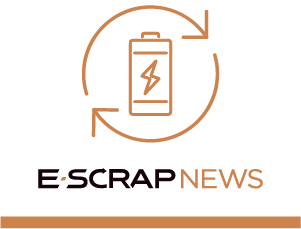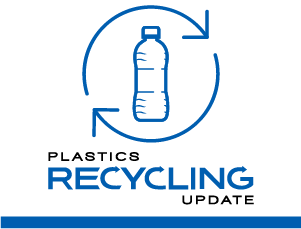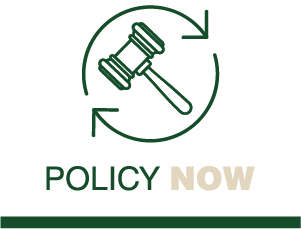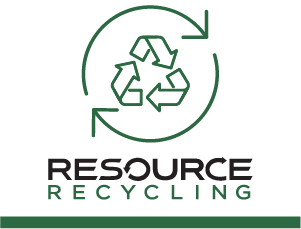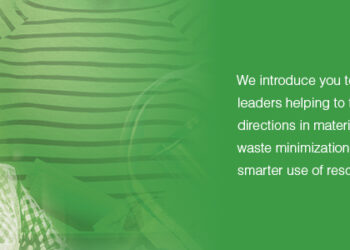This article appeared in the 2025 issue of E-Scrap News. Subscribe today for access to all print content.
The industry has proven more resilient, and at times quicker to adapt, than even those of us close to it expected.
The information technology asset disposition (ITAD) and electronics recycling industries are in the midst of one of the most dynamic periods in their history. What was once a back-end service focused on hardware disposal over the past 40 years has grown into a global system tied directly to enterprise IT planning, compliance obligations, commodity markets and even infrastructure investment.
What comes next will be even more pronounced. The sector today is expanding and consolidating at the same time, and executives are finding opportunity and risk bound tightly together.
Have earlier forecasts measured up?
Before examining the current state of play and where I expect the industry to move next, it’s worth reflecting on how earlier forecasts have measured up. At the end of 2023, I sat down with Jared Paben, then with E-Scrap News, to map out likely scenarios for 2024 . We anticipated a sluggish first half of the year, followed by a stronger second half as AI-capable PCs and the Windows 10 retirement cycle gained momentum. That projection held true. The first six months were quiet, with enterprises cautious in their spending, while the back half of the year saw the first organized replacement programs and a noticeable uptick in AI-related refresh activity.
We also foresaw component markets rebounding before commodities, and that sequence largely played out. Memory and processor resale values began recovering sooner than copper or mixed plastics. Where we underestimated change was in ESG (environmental, social and governance principles) and regulatory pressure. Plastics remain a burden, but by late 2024 Extended Producer Responsibility (EPR) laws and ESG disclosures had moved from background factors into central client requirements, more quickly and forcefully than either of us predicted.
In early 2025, I revisited these themes with Colin Staub, formerly of E-Scrap News. That discussion was shaped by tariff disputes, election-year uncertainty and slowing PC sales. We correctly identified unpredictability, not tariff levels themselves, as the greater challenge, and that has proven true. Shifting trade rules continue to complicate flows and raise costs, while rare earth and critical minerals have emerged as even sharper pressure points than we expected. Where our outlook missed was in refresh behavior. We wondered whether enterprises would hold onto devices longer; in practice, AI adoption and compliance deadlines have kept refresh cycles on track. We also explored nearshoring and in-country manufacturing as potential growth areas, but so far those remain exploratory rather than transformative.
Both conversations, however, were right to emphasize the growing weight of data centers. In 2024, we treated them as one driver among many. By 2025, we went further, calling data center decommissioning the “growth engine for the whole industry.” That description has only grown more accurate, as hyperscale refreshes now dominate the most competitive segment of ITAD.
Current state of the sector
These reflections underline a simple lesson: forecasts are strongest when they link ITAD to broad technology and economic cycles, Windows 10, AI hardware, compliance, and weaker when they wander into speculative territory. The industry has proven more resilient, and at times quicker to adapt, than even those of us close to it expected. With that context in mind, it is worth turning to what the sector looks like today, and where it is heading.
Consolidation is one of the most visible shifts. Private equity–backed roll-ups are changing the competitive map, producing multinational platforms that combine logistics, refurbishment, and recycling under one roof. I will be probing some executives who contributed to the ITAD M&A this year at the E-Scrap Conference on October 27-29, 2025. Some investors have been particularly aggressive with acquisitions and facility expansion. For smaller independents, the pressure is intense, though not every firm is being swallowed up. Some are still finding room to grow by focusing narrowly on specialized compliance work, serving only data centers, or cultivating high-touch local contracts where scale is less important.
Original equipment manufacturers (OEMs) are another source of pressure. Companies such as Dell, HP, Lenovo, and HPE are bringing more customers into their own takeback and lifecycle programs. That restricts the flow of some of the best equipment into the open market. Independent operators complain of losing ground, though many continue to win direct contracts with enterprises and hold onto quality streams. The reality is nuanced: opportunities are still there, but the field is narrowing.
For now, asset volumes are high. The retirement of Windows 10, the first real wave of AI-capable PCs, and major data center upgrades have created a surge of inbound equipment. More devices are moving through ITAD facilities than at any point in recent years. But the flood is uneven. Much of what arrives is low-value, limiting resale prospects and making processing expensive. Industry benchmarks suggest throughput alone is not enough to protect margins.
On the subject of margins, executives disagree. Many point to higher costs for labor, logistics, energy and compliance as evidence that profitability is fragile. Some admit they are moving more material but seeing less fall to the bottom line. Others, however, are having a very different experience. A few CEOs are telling me that margins are “excellent and rising,” helped by access to enterprise clients with valuable equipment and by favorable commodity pricing. This divide shows just how uneven the industry has become.
Commodity prices
Commodities are a mixed blessing. Stronger demand for copper, plastics and critical minerals has helped recovery values, giving operators some financial relief. To make this statement more accurate and reflective of current 2025 conditions, the emphasis could be placed on both the operational improvements and the recent volatility in commodity pricing, rather than suggesting an across-the-board improvement in markets.
Here’s a more precise version: Although recycled commodity prices themselves have remained volatile, sometimes lower year-over-year, large waste and recycling companies such as WM and Waste Connections have reported improved financial and operational performance in 2025, driven by stronger pricing, efficiency gains, and selective commodity recovery investments. It is also the case that recent earnings improvements are as much due to process upgrades and disciplined pricing as to market conditions. In this context, this trend indirectly supports ITAD.
Equipment suppliers like TOMRA, Andritz and Hillenbrand are also seeing new orders for advanced sorting lines, pointing to a broader investment push. But no one forgets how volatile commodity markets can be. Industry leaders warn that relying too heavily on scrap values is risky, and urge operators to build margin strategies that do not depend entirely on downstream pricing.
Compliance is another double-edged reality. Customers want ironclad evidence that their data is destroyed and their devices responsibly handled. This creates room for ITAD firms to differentiate and charge premiums. But repeated breaches and controversies around certification have damaged trust in the sector. The Wisetek incident and the guilty pleas in the US over fraudulent surplus sales remind everyone of the stakes. Executives expect compliance to evolve from a paper-based system of certificates to real-time, auditable verification, possibly even blockchain-based, where clients can see exactly what happens to their assets.
The regulatory environment is shifting too. EPR laws are multiplying in Europe and now in several US states, placing more obligations on manufacturers and recyclers. Enterprises are also under pressure to embrace the circular economy model, where reuse and resale come before recycling. For ITAD companies, this puts resale channels at the center of both ESG reporting and financial strategy.
What’s ahead
Looking further out, over a three- to five-year horizon, structural transformation will take hold. Automation and AI will move from optional tools to basic requirements. Sustainability and ESG reporting will draw ITAD into the center of enterprise sustainability strategies. Battery recycling and hazardous streams will expand, particularly in Europe and Asia where regulation is clearer, while the U.S. continues to lag. Global regulatory harmonization is inching forward but will take years outside the EU.
Through it all, transparency and trust remain the defining issues. Certificates still matter, but clients increasingly want to see evidence – digital, auditable, and verifiable – of exactly where their equipment goes and how it is processed.
The mood in the sector reflects this complexity. Many executives are energized by the asset flows, the commodity support, and the promise of automation. Others are cautious, pointing to thin margins, OEM dominance, certification fatigue, and the costs of modernization. Some see their margins climbing; others worry about holding the line.
The ITAD and electronics recycling industry today is caught between growth and risk. The short term will be dominated by surging volumes and strained logistics. The longer term will demand adaptation to automation, ESG integration, EPR compliance, hyperscale data center work and asset flows reshaped by remote work. If you are an executive in the sector, the real test will be holding onto that momentum today – while getting ready for a tomorrow where transparency, innovation, and trust are the standards for survival.
To see how the sector will shape up in the future, join me at a workshop I’ve organized on October 27 at the E-Scrap Conference (https://www.e-scrapconference.com/schedule). The 90-minute workshop, which is called “ITAD Sector Outlook: Market Momentum, Strategic Maturity and Emerging Risks, will be held at 9:15 AM.
David Daoud is Principal Analyst and President of Compliance Standards LLC, where he leads research on the IT asset disposition (ITAD) sector and adjacent industries. He has tracked the IT hardware market since 1996, expanding into disposition research in 2003, and has advised technology and financial clients worldwide. Previously, he worked as a Research Analyst at Computerworld and as a Data Analyst at Harvard University. David is also an editorial contributor to Resource Recycling and E-Scrap news. David is currently writing a book on Sustainable IT in the Age of AI due out in mid-2026.


